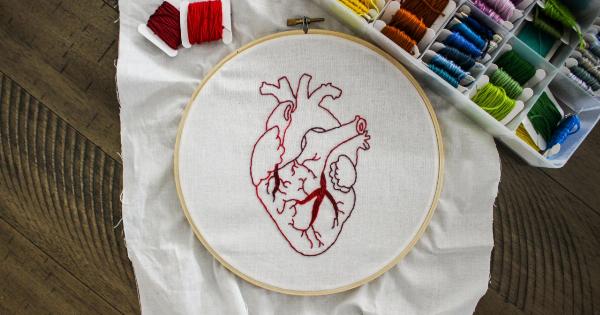Cracked Heart Syndrome, also known as Takotsubo cardiomyopathy or stress-induced cardiomyopathy, is a condition that affects the heart muscles and is often triggered by intense emotional distress.
But did you know that this condition, which was initially believed to be solely related to the heart, also has a significant connection to the brain? In this article, we will delve into the fascinating brain connection of Cracked Heart Syndrome, exploring the intricate relationship between our emotions, stress, and the functioning of our cardiovascular system.
The Basics of Cracked Heart Syndrome
Cracked Heart Syndrome is a condition characterized by sudden and temporary weakening of the heart muscles, often in response to extreme emotional or physical stress.
It was first discovered by Japanese researchers in the 1990s and earned its name due to its distinct appearance on imaging tests, where the heart takes on the shape of a traditional Japanese octopus trap called Takotsubo.
Typically, a person experiencing Cracked Heart Syndrome will exhibit symptoms similar to those of a heart attack, including chest pain, shortness of breath, and irregular heart rhythms.
However, unlike a heart attack caused by blocked arteries, Cracked Heart Syndrome is triggered by a surge of stress hormones that overwhelm the heart, leading to a temporary weakening of the heart muscles.
The Brain’s Role in Cracked Heart Syndrome
While Cracked Heart Syndrome was initially believed to be solely a result of the heart’s response to stress, recent research has shed light on the critical role played by the brain in this condition.
The brain, particularly the limbic system, which is responsible for processing emotions, plays a crucial role in how our bodies respond to stress and emotional distress.
When we experience intense emotions or stress, the limbic system releases chemicals such as adrenaline and cortisol into the bloodstream.
These stress hormones prepare our bodies for a “fight or flight” response, increasing our heart rate, constricting blood vessels, and redirecting blood flow to essential organs. If the stress persists, it can have detrimental effects on both the brain and the cardiovascular system.
Neurotransmitters and Cracked Heart Syndrome
Neurotransmitters, chemical messengers in the brain, are intimately involved in the development of Cracked Heart Syndrome. One such neurotransmitter is norepinephrine, which is released in response to stress and emotions.
Excessive levels of norepinephrine can cause damage to the heart muscles, leading to the temporary weakening seen in Cracked Heart Syndrome.
Additionally, serotonin, another neurotransmitter responsible for regulating mood, has been implicated in the development of Cracked Heart Syndrome.
Imbalances in serotonin levels can contribute to the exaggerated stress response, potentially triggering the condition in susceptible individuals.
Emotions and Broken Hearts
Strong emotions, particularly negative ones such as grief, anger, or fear, have long been associated with heartache.
We often use phrases like “my heart is breaking” to describe the profound emotional pain experienced during challenging times. As it turns out, there is scientific truth behind these expressions.
Studies have shown that emotional distress can disrupt the heart’s electrical system, leading to irregular heart rhythms and even sudden cardiac death.
This phenomenon, known as “emotional cardiomyopathy,” is closely related to Cracked Heart Syndrome. Both conditions share common triggers and are indicative of the intricate link between our emotions and cardiovascular health.
The Impact of Chronic Stress
Chronic stress, a prolonged state of emotional and psychological strain, has far-reaching consequences on our health, including the development of cardiovascular diseases.
The brain, in response to chronic stress, releases stress hormones that can damage the heart muscles over time, making individuals more susceptible to developing Cracked Heart Syndrome.
Moreover, stress-related behaviors such as overeating, smoking, or excessive alcohol consumption can further contribute to the risk of developing heart conditions.
This combination of physiological and behavioral factors puts individuals with chronic stress at a higher risk of experiencing Cracked Heart Syndrome and other heart-related complications.
The Gender Divide
Cracked Heart Syndrome predominantly affects women, with studies showing an 80-90% prevalence among female patients.
The reasons behind this gender divide are not yet fully understood, but hormonal differences, societal expectations, and psychological stressors unique to women may play a significant role.
Some researchers believe that estrogen, a hormone present in higher levels in premenopausal women, may offer some protection against the development of Cracked Heart Syndrome.
However, this theory raises questions about why postmenopausal women, who experience a significant reduction in estrogen levels, still have a higher incidence of the condition compared to men.
The Road to Recovery
The prognosis for individuals with Cracked Heart Syndrome is generally positive, with most patients recovering within weeks or months with appropriate medical care and emotional support.
However, ongoing research is focused on understanding the long-term effects of the condition and implementing strategies for prevention and rehabilitation.
Psychological support, such as therapy and stress management techniques, plays a crucial role in the recovery process.
By addressing the emotional and psychological factors that contribute to Cracked Heart Syndrome, healthcare professionals can help patients regain control over their cardiovascular health and reduce the risk of future episodes.
A Holistic Approach to Heart Health
Recognizing the brain connection of Cracked Heart Syndrome highlights the importance of taking a holistic approach to heart health. Our thoughts, emotions, and overall well-being are interconnected with the functioning of our cardiovascular system.
By prioritizing stress reduction, emotional well-being, and healthy coping mechanisms, we can significantly reduce the risk of developing heart conditions.
Furthermore, ongoing research into the brain-heart connection in conditions like Cracked Heart Syndrome opens new avenues for targeted therapies and interventions.
Understanding how emotions and stress impact our hearts can lead to innovative treatments that not only address the physiological aspects but also promote emotional resilience and overall cardiovascular health.
Conclusion
Cracked Heart Syndrome, the fascinating condition initially thought to be solely related to the heart, has proven to have a profound connection to the brain.
The intricate interplay between emotions, stress, neurotransmitters, and our cardiovascular system sheds light on the complex nature of Cracked Heart Syndrome. By exploring this brain connection, we can better understand the condition and improve prevention and treatment strategies for individuals affected by this temporary yet impactful heart condition.





























